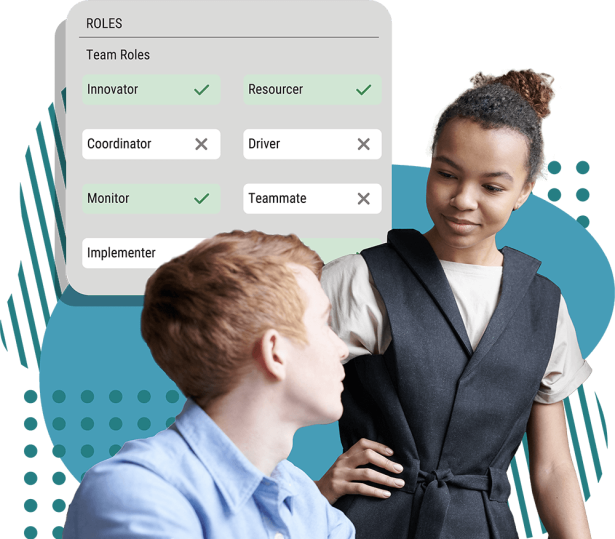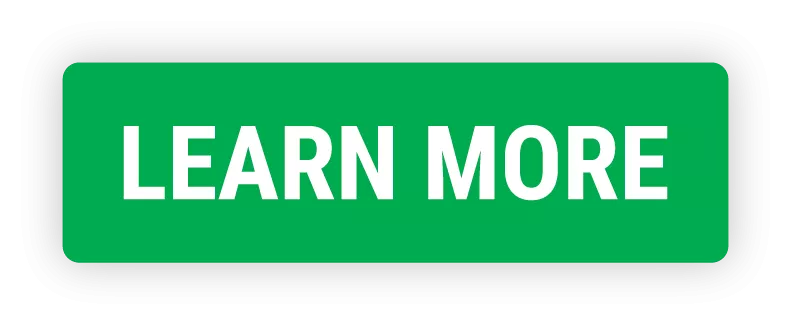Have you ever found yourself in a role where your responsibilities were as clear as mud? Or perhaps a team member feels stuck in a job description that hardly taps into their natural strengths, leaving them feeling underutilized and disengaged? If so, you’re not alone. Navigating the complexities of team roles and responsibilities can be challenging.
Understanding the essence of a team—its purpose, accountability, who it serves, and what it ultimately aims to achieve— is the first step towards clear-cut roles and responsibilities. By answering these pivotal questions, teams and their members can share vision and focused action.
When roles align with an individual’s strengths and the team’s purpose, the result is a motivated, engaged, and highly productive team. This synergy can elevate an individual’s job satisfaction and boost overall team performance. Leaders can move away from confusion toward organizational effectiveness through mutual understanding and clear roles. After all, isn’t that the ultimate goal of any team?
Key Takeaways:
- Role clarification goes beyond job descriptions; understanding and leveraging individual strengths can dramatically increase team effectiveness.
- Data-driven insights offer a strategic tool to better align responsibilities with team member’s unique skills and potential.
- Shifting roles and responsibilities based on data insights fosters better collaboration and optimizes overall team performance.
- Facilitating the understanding and application of team strengths can transform how roles and responsibilities are assigned.
- Harnessing data-informed decisions elevates individual performance and fosters a culture of continuous learning and improvement, which is crucial for strategic leadership.

What Are Team Roles And Responsibilities In The Workplace
Team roles and responsibilities in the workplace refer to the specific tasks and duties assigned to each team member and the expectations for their behavior and interaction within the team.
To further define, it’s helpful to untangle Role from Responsibility.
To empower individuals to perform at their maximum potential, their specific function within the team should be clear-cut and well-defined. Therefore, a ‘role’ pertains to an individual’s unique position within a team – this could be as a leader, facilitator, innovator, or implementer, among others. These roles are often closely tied to the person’s strengths and abilities, allowing them to contribute most effectively.
‘Responsibilities,’ on the other hand, refer to the specific tasks or duties the person is accountable for in their role.
For example, a team leader might be responsible for setting the team’s direction and making strategic decisions. At the same time, an implementer would be accountable for executing the plans and bringing ideas into reality. Clear responsibilities help ensure everyone knows exactly what they need to do, which allows the team to function more smoothly.

HUMAN SKILL PROGRAMS ARE HITTING LIMITATIONS...
- Close the widening gap between learning and on-the-job application
- Overcome the tension of pausing productivity for development opportunities
- Integrate learning so it is actually in the flow of work
- The evolution of human skill development
- What Automated Coaching™ is and how it works.

The Power of Clarity: Why Defining Team Roles is a Game-Changer
Taking time to clarify roles and responsibilities is crucial not only for the individual but also for the team dynamics. A clear understanding of who does what prevents role overlap and redundancies, streamlining the workflow and averting potential chaos. The benefits extend beyond mere efficiency—it fosters an environment of mutual respect and understanding and cultivates a sense of purpose among team members.
But clarifying roles is not just about outlining duties in a job description. It’s about recognizing and harnessing each individual’s unique strengths to the team. Job descriptions on paper are two-dimensional, unable to capture the full spectrum of talents and aptitudes a person can contribute within their role. By highlighting these strengths, stakeholders can enable each individual to operate more effectively and derive greater satisfaction from their work.
Kickstarting meaningful conversations about roles and responsibilities begins with one key element: harnessing the power of insight! By understanding each team member’s unique strengths and capabilities, leaders can better articulate individual roles and responsibilities for high performance.
How To Empower Individual Contributors to Level Up In Their Role
Picture this: You have a team member with a defined role and a list of responsibilities. This individual possesses ideas, strengths, and competencies that can further their role’s effectiveness to support team responsibilities. They might even see opportunities to reshuffle their responsibilities, shedding some tasks while embracing new ones that better align with their talents.
They’re eager to stretch their wings, elevate their career, and take on more challenging responsibilities. Your team has been grappling with project management and meeting deadlines, and this individual is confident they can make a significant difference. Although project management isn’t currently within their purview, they believe in their potential for it to become an essential aspect of their role.
Enter Cloverleaf. The beauty of this tool lies in the power of its assessments to generate coaching insights that illuminate your team member’s strengths and areas for growth. Equipped with these insights, everyone on your team can engage in meaningful conversations with their manager about evolving their role.
And the best part? All it takes is a simple screen share to showcase your potential.

Imagine This Scenario:
Let’s say an individual becomes aware of their knack for coordinating tasks and ensuring timely deliverables—skills essential in efficient project management.
This person is ready to initiate a roles & responsibilities conversation with their team leader. Prepared with detailed insight into their unique abilities and strengths, they’re ready to show how they can make a crucial difference in a specific role.
Simultaneously, their manager can access insights about this person because they are both active within the Cloverleaf Dashboard. This data helps them visualize how they can help support diversifying this person’s role and identify their potential for a future leadership position.
Suddenly, the discussion about adjusting a role evolves into a long-term career development conversation. As a result, both people are enthusiastic and engaged, eager to unleash their potential.
Supercharging Team Role Clarification from a Manager’s Perspective
Busy managers need deeper insights into individuals to develop their roles and responsibilities within their entire team. Juggling various tasks with limited time can make organizing extensive team meetings focusing solely on defining these roles and responsibilities difficult. Therefore, they need a practical, at-a-glance solution to create clear roles and responsibilities.
Managers are often aware of areas within the team that need improvement. Take team structure as an example— if off, it can hinder overall success and require a reshuffling of responsibilities to leverage the team’s strengths better.
A comprehensive understanding of each individual’s strengths can improve problem-solving and increase the team’s success. If a manager wants to understand where the teamwork is breaking down, they should evaluate how strengths are dispersed within the team.
Diving deeper than job titles and descriptions by examining team member roles holistically can offer valuable insights into how leaders might leverage their team’s skill sets and proactively plan to address the gaps.
For instance, consider a team with numerous resourceful, driven individuals who struggles to bring projects to a successful conclusion. Here, a more detailed exploration of roles and responsibilities could illuminate critical areas for improvement.
In this scenario, the manager might initiate a team discussion about current roles and accountabilities. Through this dialogue, it comes to light that a team member tasked initially with driving projects strategically excels at coordinating the minutiae to ensure project completion.
Easily accessible insights with an at-a-glance view of team strengths help the manager make informed adjustments to roles and responsibilities. These shifts not only capitalize on the strengths of individual team members but also foster better collaboration and enhance overall team effectiveness.
Five Steps To Defining Team Roles and Responsibilities
1. Define Team Goals and Objectives: Start by clearly outlining what the team is accountable for. Identify the team’s goals, the tasks necessary to achieve them, and the skills and strengths needed to execute them effectively.
2. Identify Individual Strengths and Potential: Conduct an in-depth analysis of each member’s strengths, potential, and unique skills.
3. Clarify Roles and Responsibilities: Based on the team’s objectives and the individual analysis, define clear roles and responsibilities for each teammate. Ensure these definitions leverage the individual’s strengths and align with the team’s responsibilities.
4. Facilitate Open Conversations: Foster a culture of open dialogue within the team about roles and responsibilities. Members should feel empowered to discuss their roles, propose improvements, and suggest how tasks might be better assigned.
5. Monitor and Adjust: Regularly review and adjust roles and responsibilities based on ongoing team dynamics, changing project needs, and individual growth. This continuous review allows for optimal team utilization of skills and talents, leading to more effective collaboration and enhanced performance.
This process is not just about task distribution; it’s about harnessing each member’s unique strengths and aligning them with the team’s objectives. Remember, the journey to high performance begins with clarity around roles and responsibilities, followed by a commitment to adaptation when necessary.

Final Thoughts: How Data Transforms Team Dynamics
Small, data-driven insights often produce profound results concerning team dynamics and collaboration. Defining roles and responsibilities based on each team member’s unique strengths and talents, not generic templates, is a more intentional version of leadership.
Leverage the power of insightful data to empower your leaders and teams to reach their full potential. Uncover the hidden talents within your organization to ensure you’re drawing the best from everyone.
Data-informed decision-making can transform how teams work together to achieve their shared goals. It illuminates individual strengths, mitigates weaknesses, and promotes effective collaboration. With precise, data-driven role definitions and responsibilities, each team member is positioned to thrive.
Don’t just imagine the transformative power of such insights—experience it firsthand. Schedule a Cloverleaf demo today to see an all-in-one tool to help clarify roles and develop your people to be their best every day.








